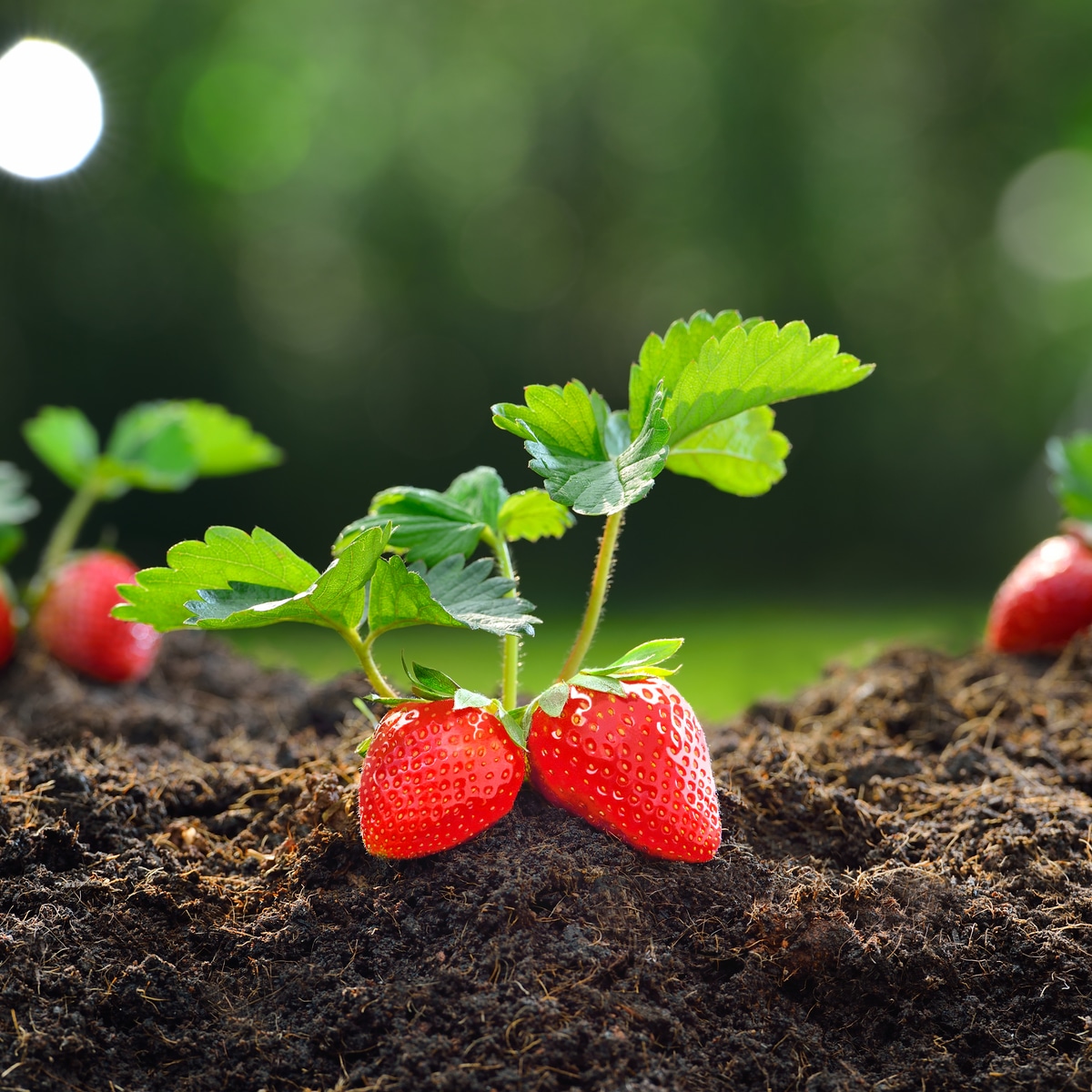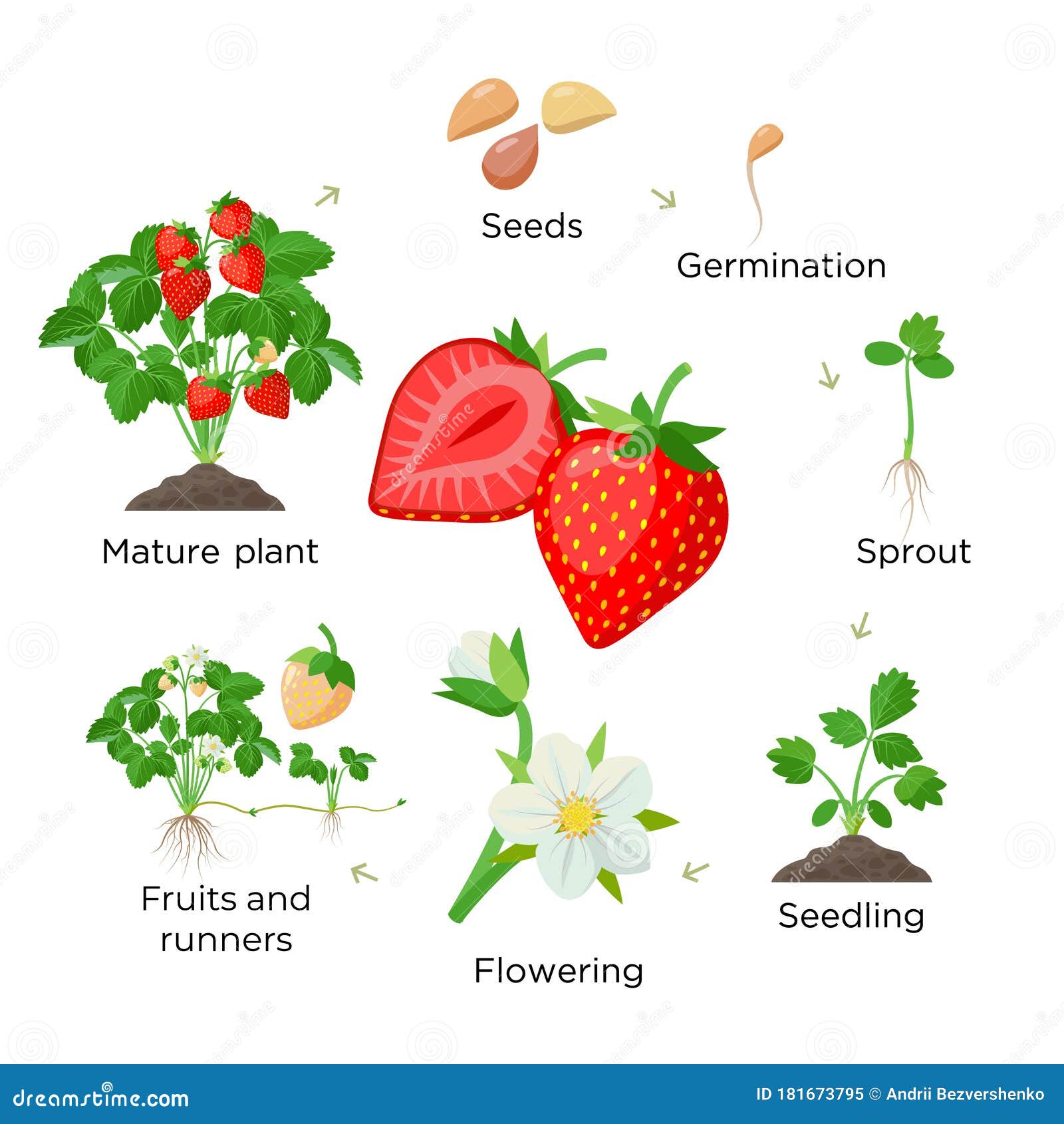Understanding the Life Cycle of Strawberry Plants
Strawberry plants, like all living organisms, go through a series of stages in their life cycle. Understanding these stages is crucial for determining when strawberry plants will flower. The life cycle of a strawberry plant consists of three main stages: vegetative growth, flowering, and fruiting. During the vegetative growth stage, the plant focuses on developing its roots, leaves, and crown. This stage is critical for the plant’s overall health and productivity.
As the plant matures, it enters the flowering stage, where it produces flowers and eventually fruit. This stage is triggered by a combination of factors, including temperature, daylight hours, and soil quality. Strawberry plants typically produce flowers in the spring, but the exact timing depends on the specific variety and growing conditions.
When strawberry plants flower, they produce small, white blooms that are rich in nectar and pollen. These flowers are self-pollinating, meaning they don’t require external pollination to produce fruit. However, having multiple plants nearby can improve fruit set and overall yields.
After the flowering stage, the plant enters the fruiting stage, where it produces delicious strawberries. This stage is critical for fruit production, and proper care during this time can significantly impact yields. By understanding the life cycle of strawberry plants, growers can better anticipate when their plants will flower and take steps to optimize fruit production.
For example, knowing when strawberry plants will flower can help growers plan for pollination, fertilization, and pest management. It can also help them identify potential issues, such as inadequate soil quality or insufficient watering, which can impact flowering and fruiting.
By recognizing the different stages of a strawberry plant’s life cycle, growers can take a more proactive approach to caring for their plants. This can lead to healthier plants, improved fruit production, and a more bountiful harvest. Whether you’re a seasoned grower or just starting out, understanding the life cycle of strawberry plants is essential for success.
Factors Affecting Strawberry Plant Flowering Times
Strawberry plants are sensitive to their environment, and several factors can influence when they will flower. Understanding these factors is crucial for optimizing flowering times and promoting healthy fruit production. Temperature is one of the most significant factors affecting strawberry plant flowering times. Most strawberry varieties require a period of cold temperatures, typically between 35°F and 45°F (2°C and 7°C), to induce flowering.
Daylight hours also play a critical role in determining when strawberry plants will flower. Strawberry plants typically require 12 to 14 hours of daylight to produce flowers. In regions with shorter daylight hours, strawberry plants may not produce flowers until the days get longer. Soil quality is another essential factor affecting strawberry plant flowering times. Strawberry plants prefer well-draining, rich soil with a pH between 5.5 and 6.5.
Watering schedules can also impact strawberry plant flowering times. Consistent moisture, especially during the flowering stage, is crucial for promoting healthy fruit production. However, over-watering can lead to root rot and other problems, which can delay or prevent flowering. Fertilization is also essential for promoting healthy flowering. A balanced fertilizer with a mix of nitrogen, phosphorus, and potassium can help promote healthy growth and flowering.
Other factors, such as pruning and pest management, can also impact strawberry plant flowering times. Pruning can help promote healthy growth and encourage flowering, while pest management can help prevent damage to the plants and promote healthy fruit production. By understanding these factors and optimizing them, growers can promote healthy flowering and fruit production in their strawberry plants.
For example, in regions with cool winters, strawberry plants may not produce flowers until the spring, when the temperatures warm up. In regions with mild winters, strawberry plants may produce flowers in the fall or early winter. By understanding the specific factors affecting their strawberry plants, growers can take steps to optimize flowering times and promote healthy fruit production.
By optimizing these factors, growers can promote healthy flowering and fruit production in their strawberry plants, leading to a more bountiful harvest. Whether you’re a seasoned grower or just starting out, understanding the factors affecting strawberry plant flowering times is essential for success.
How to Encourage Strawberry Plants to Bloom
Encouraging strawberry plants to bloom requires a combination of proper care, pruning, and fertilization. By providing the right conditions, you can promote healthy flowering and fruit production in your strawberry plants. One of the most effective ways to encourage strawberry plants to bloom is through pruning. Pruning helps to promote healthy growth, encourages the plant to produce more flowers, and increases fruit production.
There are several pruning techniques you can use to encourage strawberry plants to bloom. One technique is to remove any dead or damaged leaves or flowers, which can help to promote healthy growth and prevent disease. Another technique is to thin out the plant, removing any weak or spindly growth, which can help to encourage the plant to produce more flowers.
Fertilization is also essential for encouraging strawberry plants to bloom. A balanced fertilizer with a mix of nitrogen, phosphorus, and potassium can help to promote healthy growth and flowering. It’s also important to fertilize at the right time, as fertilizing too early or too late can impact flowering and fruit production.
Pest management is also crucial for encouraging strawberry plants to bloom. Pests such as aphids, whiteflies, and spider mites can damage the plant and prevent flowering. By using organic or integrated pest management techniques, you can help to prevent pest damage and promote healthy flowering.
Providing the right growing conditions is also essential for encouraging strawberry plants to bloom. Strawberry plants prefer well-draining soil, full sun, and consistent moisture. By providing these conditions, you can help to promote healthy growth and flowering.
For example, in regions with cool winters, strawberry plants may not produce flowers until the spring, when the temperatures warm up. In regions with mild winters, strawberry plants may produce flowers in the fall or early winter. By understanding the specific growing conditions and providing the right care, you can encourage your strawberry plants to bloom and produce fruit.
By following these tips and providing the right care, you can encourage your strawberry plants to bloom and produce fruit. Whether you’re a seasoned grower or just starting out, with the right techniques and care, you can enjoy a bountiful harvest of delicious strawberries.
Recognizing the Signs of Impending Bloom
As strawberry plants approach the flowering stage, they exhibit distinct physical signs that indicate impending bloom. By recognizing these signs, growers can anticipate when their strawberry plants will flower and take steps to optimize fruit production. One of the earliest signs of impending bloom is the formation of flower buds. These buds typically appear at the crown of the plant, where the leaves meet the stem.
Another sign of impending bloom is a change in leaf color. As the plant prepares to flower, the leaves may become a deeper green or take on a reddish tint. This color change is a natural response to the plant’s increasing energy demands as it prepares to produce flowers and fruit.
The appearance of runners is also a sign of impending bloom. Runners are long stems that grow along the ground, producing new plants at their tips. As the plant prepares to flower, the runners may become more prominent, indicating that the plant is about to produce flowers.
By recognizing these physical signs, growers can anticipate when their strawberry plants will flower and take steps to optimize fruit production. For example, growers can adjust their watering and fertilization schedules to promote healthy flowering and fruiting.
It’s also important to note that different strawberry plant varieties may exhibit different signs of impending bloom. For example, ‘Everbearing’ varieties may produce flowers continuously throughout the growing season, while ‘June-bearing’ varieties may produce a single large crop in the spring.
By understanding the specific signs of impending bloom for their strawberry plant variety, growers can take steps to optimize fruit production and enjoy a bountiful harvest. Whether you’re a seasoned grower or just starting out, recognizing the signs of impending bloom is an essential part of growing delicious strawberries.
Strawberry Plant Varieties and Their Bloom Times
Strawberry plants come in a variety of types, each with its own unique characteristics and bloom times. Understanding the different types of strawberry plant varieties and their corresponding bloom times can help growers optimize their fruit production and enjoy a bountiful harvest. One of the most popular types of strawberry plants is the ‘Everbearing’ variety.
‘Everbearing’ strawberry plants produce flowers and fruit continuously throughout the growing season, typically from spring to fall. This variety is ideal for growers who want a steady supply of fresh strawberries throughout the year. Another popular variety is the ‘June-bearing’ strawberry plant, which produces a single large crop in the spring.
‘June-bearing’ strawberry plants typically bloom in late spring, around May or June, and produce a large crop of fruit over a short period. This variety is ideal for growers who want a large harvest of strawberries all at once. Other types of strawberry plant varieties include ‘Day-neutral’ and ‘Short-day’ varieties, which produce flowers and fruit in response to specific daylight hours.
‘Day-neutral’ strawberry plants produce flowers and fruit regardless of the daylight hours, while ‘Short-day’ varieties require shorter daylight hours to produce flowers and fruit. By understanding the different types of strawberry plant varieties and their corresponding bloom times, growers can choose the variety that best suits their needs and climate.
For example, growers in regions with mild winters may prefer ‘Everbearing’ varieties, which can produce flowers and fruit year-round. Growers in regions with cool winters may prefer ‘June-bearing’ varieties, which produce a single large crop in the spring. By choosing the right variety, growers can optimize their fruit production and enjoy a bountiful harvest.
It’s also important to note that different strawberry plant varieties may have different growing requirements, such as soil quality, watering schedules, and fertilization needs. By understanding the specific needs of their strawberry plant variety, growers can provide the best possible care and optimize their fruit production.
Common Mistakes to Avoid When Growing Strawberry Plants
When growing strawberry plants, it’s essential to avoid common mistakes that can impact flowering and fruit production. One of the most common mistakes is over-watering, which can lead to root rot and other problems. Strawberry plants prefer well-draining soil and should not be watered excessively, especially during the flowering stage.
Under-fertilizing is another common mistake that can impact flowering and fruit production. Strawberry plants require a balanced fertilizer with a mix of nitrogen, phosphorus, and potassium to promote healthy growth and flowering. Failing to provide adequate fertilization can result in weak and spindly growth, reducing fruit production.
Inadequate pruning is also a common mistake that can impact flowering and fruit production. Pruning helps to promote healthy growth, encourages the plant to produce more flowers, and increases fruit production. Failing to prune strawberry plants regularly can result in a reduction in fruit production and a decrease in plant vigor.
Other common mistakes to avoid when growing strawberry plants include inadequate pest management, poor soil quality, and inadequate sunlight. By avoiding these common mistakes, growers can promote healthy growth, encourage flowering, and maximize fruit production.
For example, growers who fail to provide adequate pest management may experience a reduction in fruit production due to pest damage. Similarly, growers who fail to provide adequate sunlight may experience a reduction in fruit production due to inadequate photosynthesis.
By understanding the common mistakes to avoid when growing strawberry plants, growers can take steps to prevent these mistakes and promote healthy growth, flowering, and fruit production. Whether you’re a seasoned grower or just starting out, avoiding these common mistakes is essential for success.
Strawberry Plant Care During the Flowering Stage
During the flowering stage, strawberry plants require specific care to promote healthy growth and fruit production. One of the most important aspects of care during this stage is watering. Strawberry plants need consistent moisture, especially during the flowering stage, to promote healthy growth and fruit production.
However, over-watering can be detrimental to strawberry plants, leading to root rot and other problems. It’s essential to water strawberry plants deeply but infrequently, allowing the soil to dry slightly between waterings. This will help to promote healthy growth and prevent water-borne diseases.
Fertilization is also crucial during the flowering stage. Strawberry plants require a balanced fertilizer with a mix of nitrogen, phosphorus, and potassium to promote healthy growth and fruit production. A fertilizer with a higher phosphorus content can help to promote fruiting and flowering.
Protecting strawberry plants from pests and diseases is also essential during the flowering stage. Regularly inspect plants for signs of pests or diseases, and take action promptly if necessary. Use organic or integrated pest management techniques to minimize harm to the environment and promote healthy growth.
Other important aspects of care during the flowering stage include providing adequate sunlight, maintaining good air circulation, and controlling weeds. By providing the right conditions and care, strawberry plants can thrive and produce a bountiful harvest of delicious fruit.
For example, growers can use row covers to protect strawberry plants from pests and diseases, while also providing shade and retaining moisture. This can help to promote healthy growth and fruit production, while minimizing the risk of pests and diseases.
By following these tips and providing the right care, growers can promote healthy growth and fruit production in their strawberry plants during the flowering stage. Whether you’re a seasoned grower or just starting out, proper care during this critical stage is essential for success.
Maximizing Fruit Production After Flowering
After the flowering stage, strawberry plants enter the fruiting stage, where they produce delicious fruit. To maximize fruit production, it’s essential to provide proper care during this critical stage. One of the most important techniques for promoting fruit set is thinning, which involves removing some of the flowers to allow the remaining ones to produce larger fruit.
Thinning can help to increase fruit size and quality, while also promoting healthy growth and fruit production. Another technique for promoting fruit set is fertilization, which provides the necessary nutrients for fruit growth and development. A balanced fertilizer with a mix of nitrogen, phosphorus, and potassium can help to promote healthy fruit growth and development.
Harvesting is also an essential part of maximizing fruit production. Strawberry plants typically produce fruit in the spring and summer months, and regular harvesting can help to promote continued fruit production. It’s essential to harvest strawberries regularly, as allowing them to remain on the plant for too long can reduce fruit quality and promote disease.
Other important techniques for maximizing fruit production include providing adequate sunlight, maintaining good air circulation, and controlling weeds. By providing the right conditions and care, strawberry plants can produce a bountiful harvest of delicious fruit.
For example, growers can use mulch to retain moisture and suppress weeds, while also providing a clean and healthy environment for fruit production. This can help to promote healthy growth and fruit production, while minimizing the risk of disease and pests.
By following these tips and providing the right care, growers can maximize fruit production and enjoy a bountiful harvest of delicious strawberries. Whether you’re a seasoned grower or just starting out, proper care during this critical stage is essential for success.


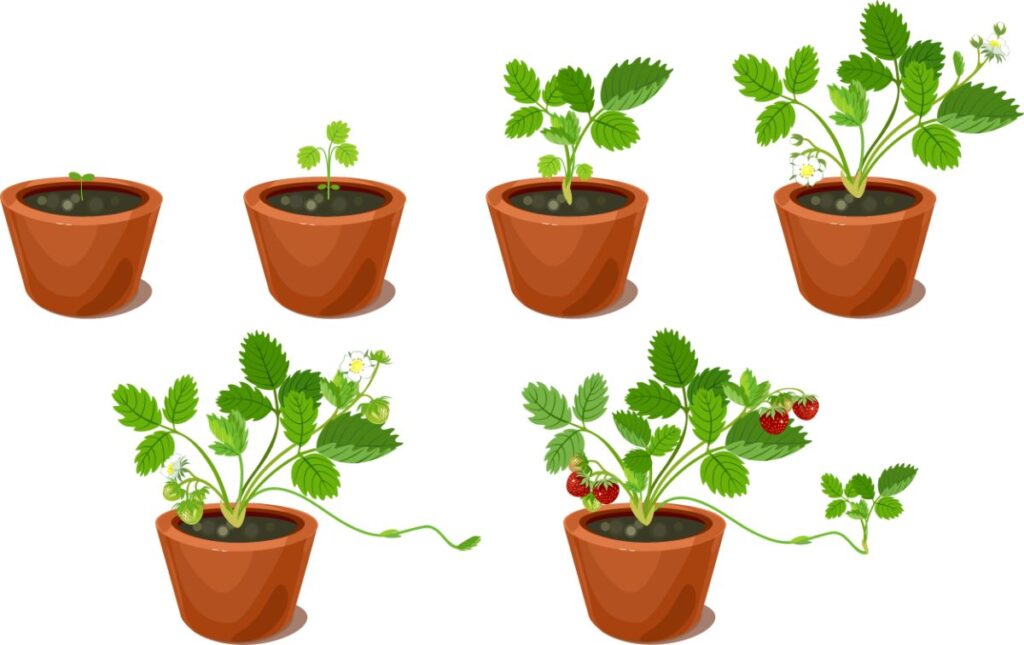
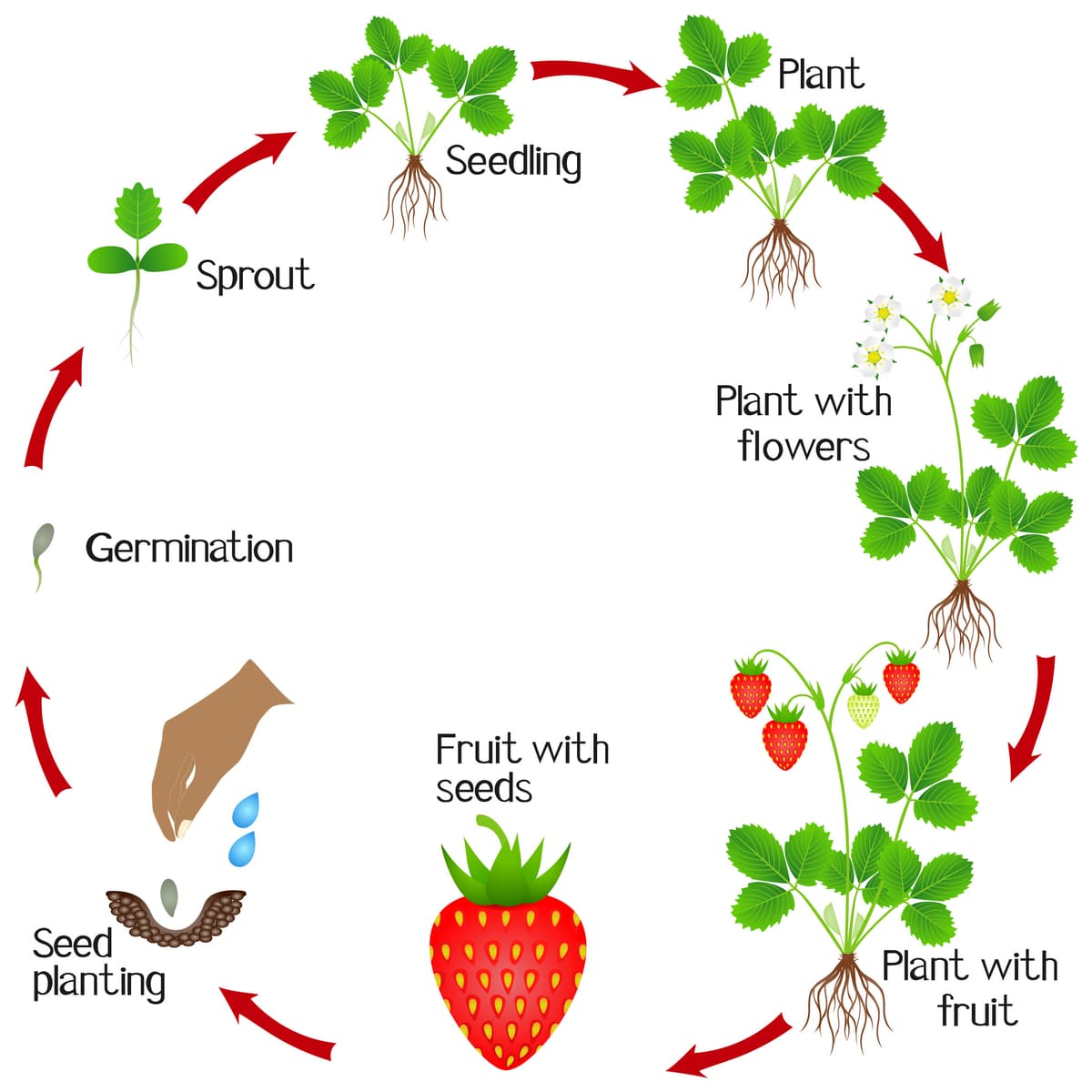
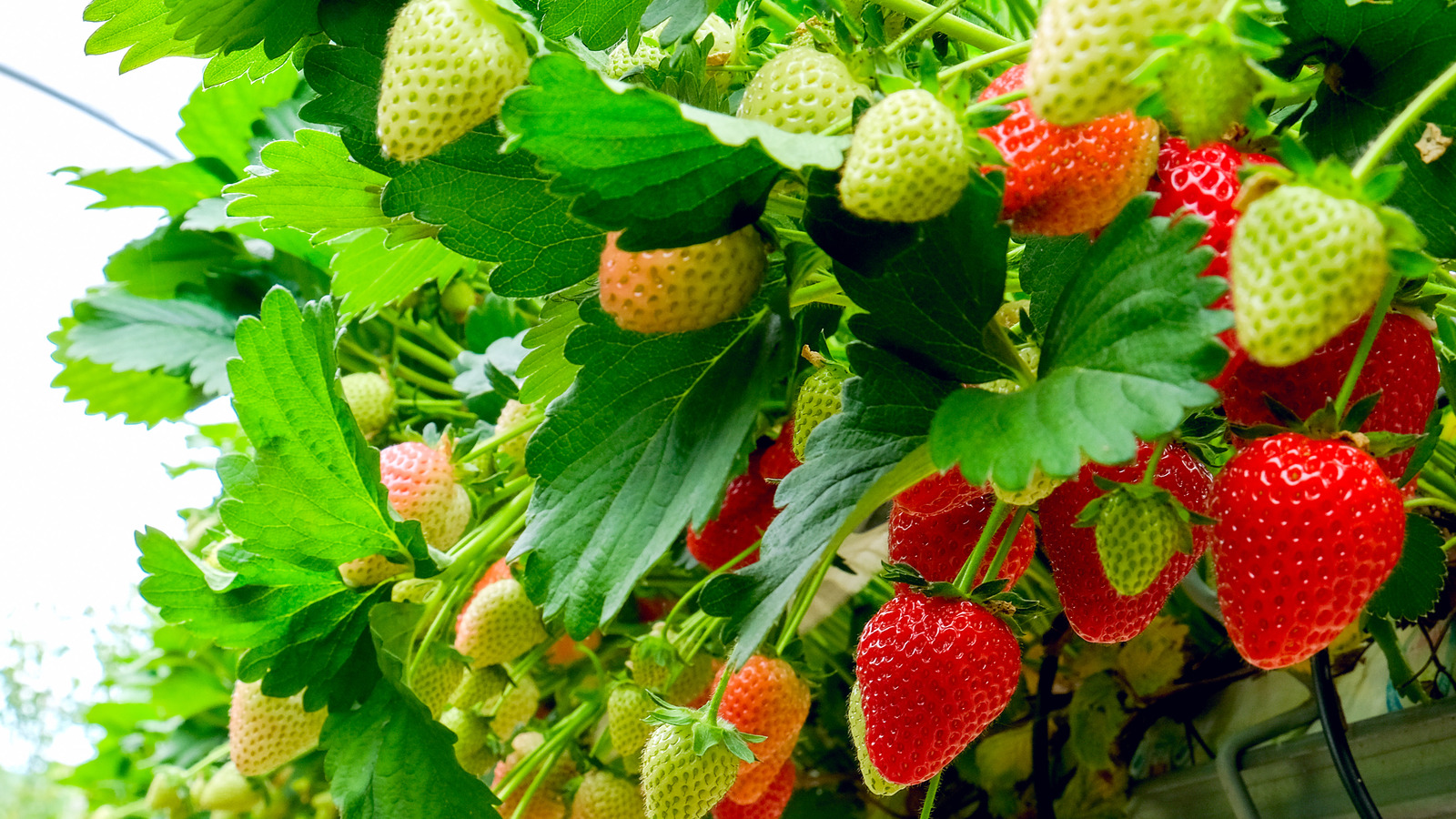
/Strawberryplant-GettyImages-123533002-5b198b33eb97de0036be58ae-d5982c5730984563a32598ee2a96fe3e.jpg)
